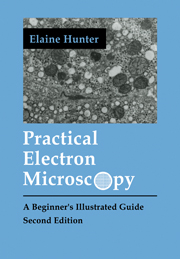Appendix
Published online by Cambridge University Press: 05 June 2012
Summary
DEFINITIONS (HANDBOOK OF CHEMISTRY AND PHYSICS 1988–1989)
Acids are hydrogen-containing substances that dissociate on solution in water to produce one or more hydrogen ions. An acid is anything that can attach itself to something with an unshared pair of electrons.
Bases are substances that dissociate on solution in water to produce one or more hydroxyl ions. A base is anything that has an unshared pair of electrons.
A salt is any substance that yields ions other than hydrogen or hydroxyl ions. A salt is obtained by replacing the hydrogen of an acid by a metal.
A normal solution (a former expression of concentration) is the number of gram equivalents of the substance per liter of solution.
A molal solution contains one gram molecular weight of the solute per kilogram of solution (mol/kg).
A molar solution contains one gram molecular weight (M – relative molecular mass) of the solute per liter of solution (mol/L).
The molecular weight is the sum of the atomic weights (Ar – relative atomic mass) of all the atoms in a molecule.
A molecule is the smallest unit quantity of matter that can exist by itself and retain all the properties of the original substance.
Concentration refers to the amount in weight, moles, or equivalents contained in a unit volume.
Daltons refers to atomic mass units.
Gram atomic weight is the mass in grams numerically equal to the atomic weight.
Gram equivalent weight is the weight of a substance displacing or otherwise reacting with 1.008 grams of hydrogen or combining with 0.5 of a gram atomic weight (8.00 grams) of oxygen.
- Type
- Chapter
- Information
- Practical Electron MicroscopyA Beginner's Illustrated Guide, pp. 157 - 170Publisher: Cambridge University PressPrint publication year: 1993

